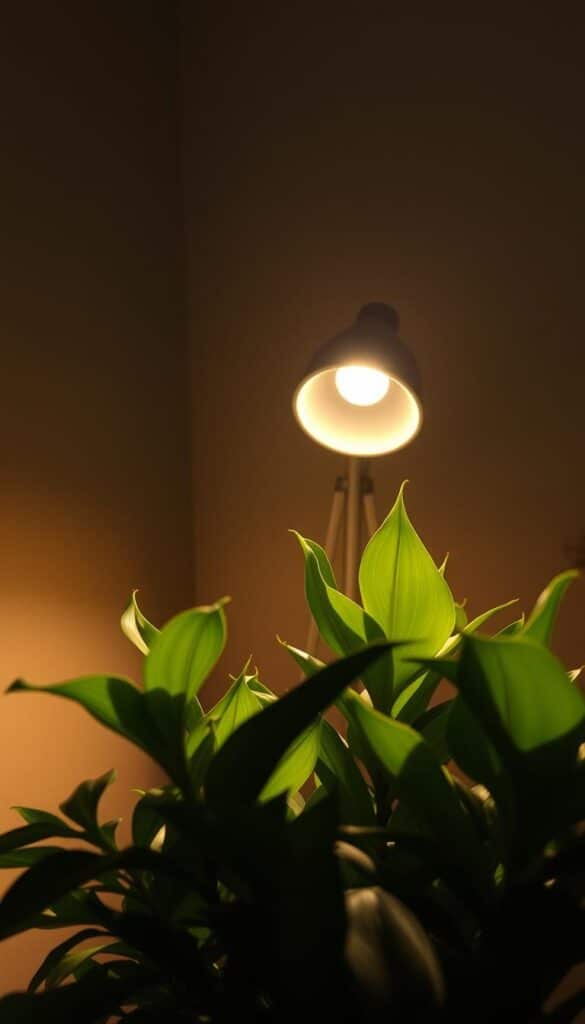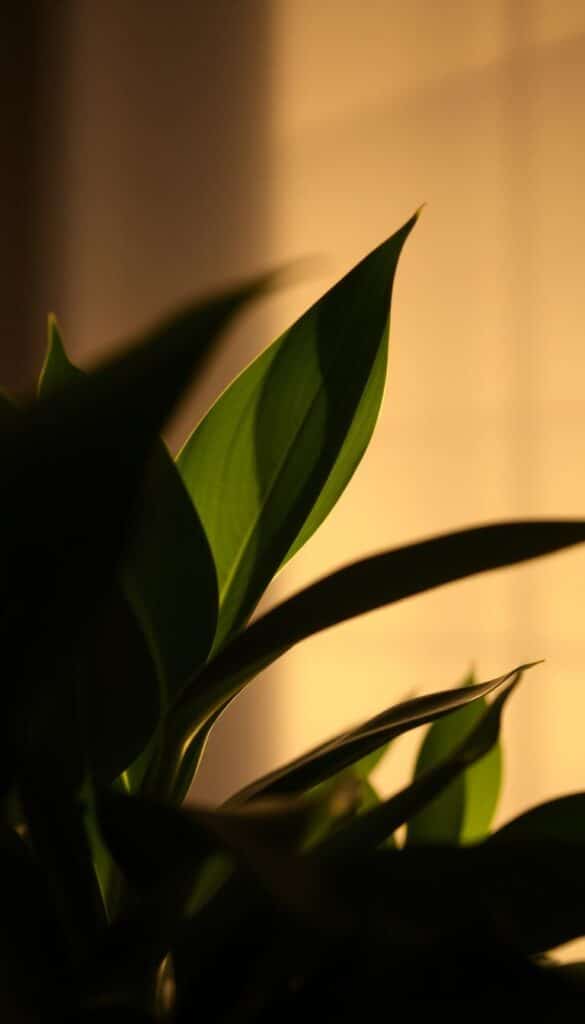As an indoor gardening enthusiast, I’ve learned that providing the right light is crucial for any houseplant to flourish. My journey with the ZZ Plant began when I discovered its reputation as a low-maintenance option for indoor spaces. But what does it mean for a plant to thrive in low light conditions? Simply put, it means the plant can survive and grow well without direct sunlight, making it perfect for rooms with limited natural light.
The ZZ Plant, often called the “lazy plant” due to its ability to tolerate neglect, is a favorite among houseplant lovers. According to expert sources, this plant performs best with bright, indirect light—not too dark and not sun-scorched. It’s all about finding that balanced middle ground. While it can survive in low light, it won’t reach its full potential without some indirect sunlight.
In this guide, I’ll share actionable care tips sourced from trusted botanical experts and gardening resources. By understanding the unique light requirements and environmental needs of the ZZ Plant, you’ll be able to create the perfect conditions for it to thrive in your home. Whether you’re a seasoned gardener or a beginner, these tips will help your ZZ Plant become a stunning addition to your indoor space.
– The ZZ Plant can thrive in low light but prefers bright, indirect sunlight.
– Proper light balance is key to its health and growth.
– This guide provides expert-backed tips for optimal ZZ Plant care.
Understanding the Unique Needs of Your ZZ Plant
When it comes to houseplants, each species has its own preferences. The ZZ Plant, scientifically known as Zamioculcas zamifolia, is no exception. Native to East Africa, this plant has evolved to thrive in environments with limited sunlight, making it a perfect choice for indoor spaces with low light conditions.
Recognizing Optimal Light Conditions
The key to keeping your ZZ Plant happy is understanding its light requirements. While it can survive in low light, it prefers bright, indirect sunlight. Direct sunlight can be harmful, potentially causing the leaves to become scorched. In its natural habitat, the ZZ Plant grows under shaded canopies, which filters the sunlight and provides the perfect balance of light and shade.
Differences Between Natural and Artificial Lighting
Natural sunlight is always the best option, but when it’s not available, artificial lighting can be a great substitute. Fluorescent and LED grow lights are excellent choices for providing the right intensity without the risk of burning the leaves. The table below compares natural and artificial lighting options for your ZZ Plant:
| Lighting Type | Advantages | Disadvantages |
|---|---|---|
| Natural Sunlight | Natural spectrum, promotes healthy growth | Can be too intense if direct |
| Fluorescent Lighting | Energy-efficient, consistent light | May not provide full spectrum |
| LED Lighting | Full spectrum, adjustable intensity | Higher initial cost |
By understanding these differences, you can create the ideal lighting conditions for your ZZ Plant to flourish.
Set-Up Essentials: Creating the Perfect Low Light Environment
Setting up the right environment is key to helping your plant flourish. It’s all about balancing the right conditions to create a space where your plant can thrive.
Selecting the Right Room and Positioning
Choosing the right room is the first step. Opt for a space with low light but avoid complete darkness. A spot near a window with filtered sunlight is ideal. This ensures your plant gets consistent, indirect light throughout the day without being scorched by direct sun.
Choosing Suitable Soil and Potting Mix
The right soil and potting mix are vital. Look for a well-draining mix to prevent water from pooling, which can harm the roots. A pot with drainage holes is also essential to avoid water retention issues. This setup promotes healthy root growth and overall plant health.

By combining proper positioning and soil care, you create an optimal environment for your plant to thrive in low light conditions. These simple steps ensure your plant stays happy and healthy.
zz plant low light thriving: Core Care Tips
Keeping your ZZ Plant happy and healthy involves more than just the right light. Proper watering, fertilizing, and maintaining the right environment are crucial for its growth.
Watering, Fertilizing, and Temperature Guidelines
I water my ZZ Plant sparingly, allowing the soil to dry completely between sessions. Overwatering is as harmful as underwatering, so it’s important to find that balance. During growing season, I use a water-soluble fertilizer at half the recommended strength to promote healthy growth without overloading the plant.
Maintaining a consistent temperature between 65-75°F (18-24°C) is ideal. Avoid placing your plant near drafty windows or extreme heat sources to protect it from sudden changes.
Balancing Humidity and Light Exposure
Humidity plays a role in your plant’s health. While the ZZ Plant is adaptable, maintaining a moderate humidity level around 40-50% can enhance its appearance. You can achieve this with a humidifier or by placing the plant on a tray filled with water and pebbles.
| Care Aspect | Importance | Maintenance |
|---|---|---|
| Watering | Essential for root health | Water when soil is dry |
| Fertilizing | Supports growth | Fertilize during growing season |
| Temperature | Prevents stress | Maintain 65-75°F |
| Humidity | Enhances appearance | Maintain 40-50% |
By following these care tips, your ZZ Plant will remain vibrant and continue to thrive even in low light conditions.
Troubleshooting ZZ Plant Health in Low Light
Identifying issues early can make a big difference in keeping your plant healthy. I’ve noticed that even in low light, improper light exposure can cause problems. Let’s look at the common signs and how to fix them.
Identifying Signs of Overexposure and Underexposure
Too much direct sunlight can scorch the leaves, turning them yellow or brown. On the other hand, too little light may cause the stems to stretch, making the plant look leggy. Both situations can affect the plant’s overall health.
| Signs of Overexposure | Signs of Underexposure | Solutions |
|---|---|---|
| Leaves turn yellow or brown | Stems become long and leggy | Move plant away from direct sunlight |
| Leaf edges become crispy | Slow growth rate | Provide bright, indirect light |
| Black spots on leaves | Loss of natural color | Adjust position based on time of day |

Monitoring the roots is also important. Overwatering in low light can lead to root rot. Check the soil regularly and adjust your watering schedule, especially during different seasons. By paying attention to these signs and making timely adjustments, you can keep your plant healthy and thriving in any environment.
Wrapping Up Your ZZ Plant Journey
As you conclude your journey with the ZZ Plant, remember that its resilience and low-maintenance nature make it a perfect companion for any indoor space. By focusing on the right balance of indirect light, water, and soil conditions, you’ve set the stage for your plant to flourish.
From my own experience, these care tips have transformed how I approach indoor gardening. Experimenting with different setups and adjusting routines based on seasonal changes can make a significant difference. Whether it’s a sunny summer or a cozy winter, your plant can thrive with a little attention.
I encourage you to share your own ZZ Plant stories and experiences. Every space, from a home to an office, can be a haven for this adaptable houseplant. With patience and care, even the darkest areas can become vibrant spaces where your plant can grow and bring joy.
